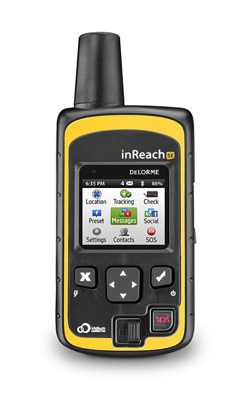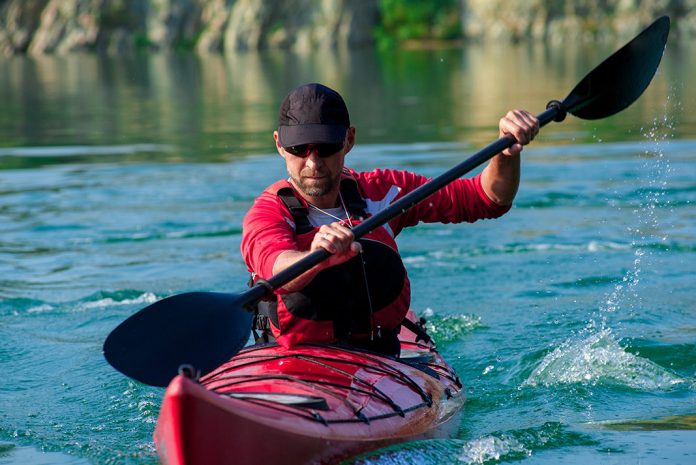Fans of Seaward Kayaks can be forgiven for putting purchasing decisions on hold following the West Coast company’s appearance last week on the hit CBC reality show, Dragons’ Den.
If you aren’t among the 1.2 million Canadians tuning into this show every week, the concept is simple: Toss aspiring entrepreneurs and their (sometimes hair-brained) business concepts into the Den with five business mogul “Dragons”—and watch the underdogs either tame the Dragons, or fall to their fiery wrath.
In the episode that aired January 29, 2014, Seaward’s then general sales manager, Douglas Godkin, pitched the company’s plans to launch a rotomolded plastic kayaks division. Since starting the fledgling business 25 years ago out of a garage, owners Steve Ree and his wife Jacquie had grown Seaward into Canada’s largest manufacturer of fiberglass kayaks, explained Godkin, “but we’re missing that huge, $1,800-and-under market for rotomolded plastic touring boats.” Expanding their product line into a RM kayak division would allow Seaward to capture a piece of that pie, Godkin told the Dragons. “There’s 33,000 [rotomolded touring] boats sold in the U.S. alone every year, and with our name, our dealer base, and the relationships that we have, we can easily crack into that market.”
In a room infamous for disparaging remarks and deflated dreams, the Dragons were uncharacteristically encouraging, even eager. “I think it’s an interesting business, and I also thought you presented very well,” said dragon David Chilton. Three counter-offers from four Dragons followed.
After a quick, back-room meeting with Steve and Jacquie, Godkin happily accepted Chilton’s offer: $300 K for a 15 percent equity stake, plus 5 percent royalty until his capital was recouped.
But, as with so many primetime promises, all is not as seen on TV.
The episode filmed in April 2013 and in the months leading up to its January air date, much had changed at Seaward. Godkin was no longer with the company. And Seaward sold its existing thermoformed plastic kayaks division to Canadian-owned Kayak Distribution in the summer of 2013. In an interview with Adventure Kayak on February 7, 2014, Seaward’s Jacquie Ree explained how events unfolded off-camera.
“You have a five-minute window at the show to review everything and make a decision,” she says. Although, initially, the offer seemed like a dream come true, “after we got home and went through the due diligence period with Dave Chilton, we decided we didn’t want to bring him in as a partner.”
Call it entrepreneurial intuition or cold feet, but the diligence period gave the Rees time to reexamine their plans. “We decided to go back to our roots, staying with higher end fiberglass and Kevlar boats,” Jacquie continues. “The low end rotomolded market is already so flooded. With all the challenges of building boats in Canada, we did more research and decided we didn’t want to get into it.”
Still, she says, a date with the Dragons was certainly worthwhile. “Personally, we enjoyed every minute; it was challenging and exciting. I would definitely do it again.”
Jacquie says Seaward’s motto has long been “keep it small, keep it all,” and a new business partner didn’t fit into that equation. Chilton and the Rees parted ways, and Seaward, says Jacquie, went back to “doing what we do best.” —Virginia Marshall
Watch Seaward Kayaks take on the Dragons’ Den. Full episode below.





 Introduced in June 2013, DeLorme’s inReach SE is the first and only two-way handheld satellite messenger with a built-in bright, high-resolution screen. Users can exchange 160-character text messages back and forth with any cell number or email address using the screen and virtual keyboard with predictive text – even when it’s not paired with a smartphone or tablet. In addition to text messaging, inReach SE provides remote GPS tracking and interactive SOS distress alerting. It uses the Iridium satellite network for 100 percent global coverage without any black-out zones or fringe areas.
Introduced in June 2013, DeLorme’s inReach SE is the first and only two-way handheld satellite messenger with a built-in bright, high-resolution screen. Users can exchange 160-character text messages back and forth with any cell number or email address using the screen and virtual keyboard with predictive text – even when it’s not paired with a smartphone or tablet. In addition to text messaging, inReach SE provides remote GPS tracking and interactive SOS distress alerting. It uses the Iridium satellite network for 100 percent global coverage without any black-out zones or fringe areas.




